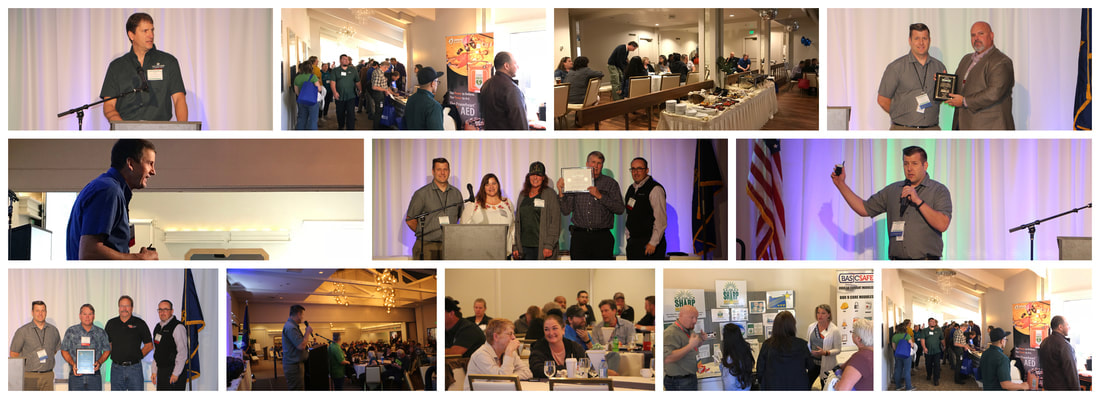Four years later, while I was working in a wood products manufacturing facility as a supervisor, hundreds of miles away, I heard the tragic news that Gregg died in a major fire event at the plant-site along with two other co-workers. During a construction project on the site, a conveyor belt got sparks in it and transferred the fire to multiple places in the facility. This caused at least one dust explosion. Employees at the site made heroic efforts to stop the fire. Over 100 firefighters responded, and many of the workers were trapped and had to be rescued by the firefighters. At least seven other employees were injured in the fire and dust explosion that occurred.
This event saddened me on multiple levels. I want to focus on one of these levels. The fact that I worked in a similar industry with comparable hazards and potential exposures was not lost on me. In the years since the incident, I have endeavored to better understand and study the causal factors of this incident.
I have identified several key areas that could have helped prevent the fire and the tragedy that followed based on the news reports and investigation findings of this preventable disaster. I offer some of these lessons for you to consider as you work to prevent similar serious incidents at any worksite in all industries:
- Management of contractor activity onsite
- Are the contractor safety policies and procedures compatible with the host facility?
- Does your contractor understand your fire prevention procedures?
- Does your contractor have specific hot work procedures that involve posting of alerts, fire watch, and site inspections?
- Does your contractor provide training and basic firefighting equipment to their employees that will be on your site?
- Emergency response planning
- Does your emergency response planning cover every potential emergency that could occur at your worksite?
- Do you perform periodic evacuation drills and simulated emergency events?
- Are your local emergency responders familiar with your site and the potential hazards?
- Do employees have specialized training and equipment required for dealing with anticipated emergencies?
- Do employees understand what kinds of fires they can safely fight?
- Hazard Identification and controls
- Is your organization recognizing and reporting hazards that can contribute to serious disaster events?
- Consider hazards such as dust, inadequate non-code electrical components, and hot work procedures. Consider the locations and sources of heat, electricity, and fuel that could contribute to an emergency.
- Does your operation implement controls that focus on eliminating the possibility of potential immediate causes?
- Are these controls inspected and evaluated on a regular basis?
- Do you have systems in place that could tell you when these controls are not being used?
- Are you performing regular preventive maintenance to assure that a mechanical problem won’t cause a dangerous condition?
- Are routine housekeeping efforts at the facility sufficient to prevent dangerous conditions?
- Pre-task planning for non-routine tasks
- Do employees have pre-task discussions as a group about the challenges posed by tasks that are not routine?
- Is enough time allocated to non-routine tasks to prevent workers from trying to do a sensitive task in a rushed manner?
- Management of change
- Does the change planning process for significant repairs or additions include potential safety problems that could arise?
- Does the change project create additional hazards that we can plan on mitigating before construction or re-organization?
- At the beginning of your project, can you engineer integral bypasses, containment, and emergency detection systems that can help isolate a serious problem before it spreads?
A thorough study of these concepts and considerations by your work team can prevent heartbreaking events that are difficult to live with. Using these techniques can prevent a multitude of hazards and injuries. Here are some resources that I have found that are good guides to help you in your efforts:
https://www.osha.gov/SLTC/emergencypreparedness/index.html
https://www.saif.com/safety-and-health/topics/prevent-injuries/combustible-dust-and-flammable-materials.html
https://www.osha.gov/SLTC/etools/evacuation/fire.html
https://osha.oregon.gov/OSHAPubs/pubform/Fire-prevention-plan.pdf
David Hanson, CSP
Vice President, ASSP – Southern Oregon Chapter
Senior Safety Management Consultant, SAIF Corporation
David has an expertise building dynamic safety teams and developing high-performing safety cultures. He spent 18 years at Timber Products Company as a Supervisor and Safety Coordinator and facilitated continued certification into Oregon OSHA's Voluntary Protection Program (VPP).
 RSS Feed
RSS Feed
